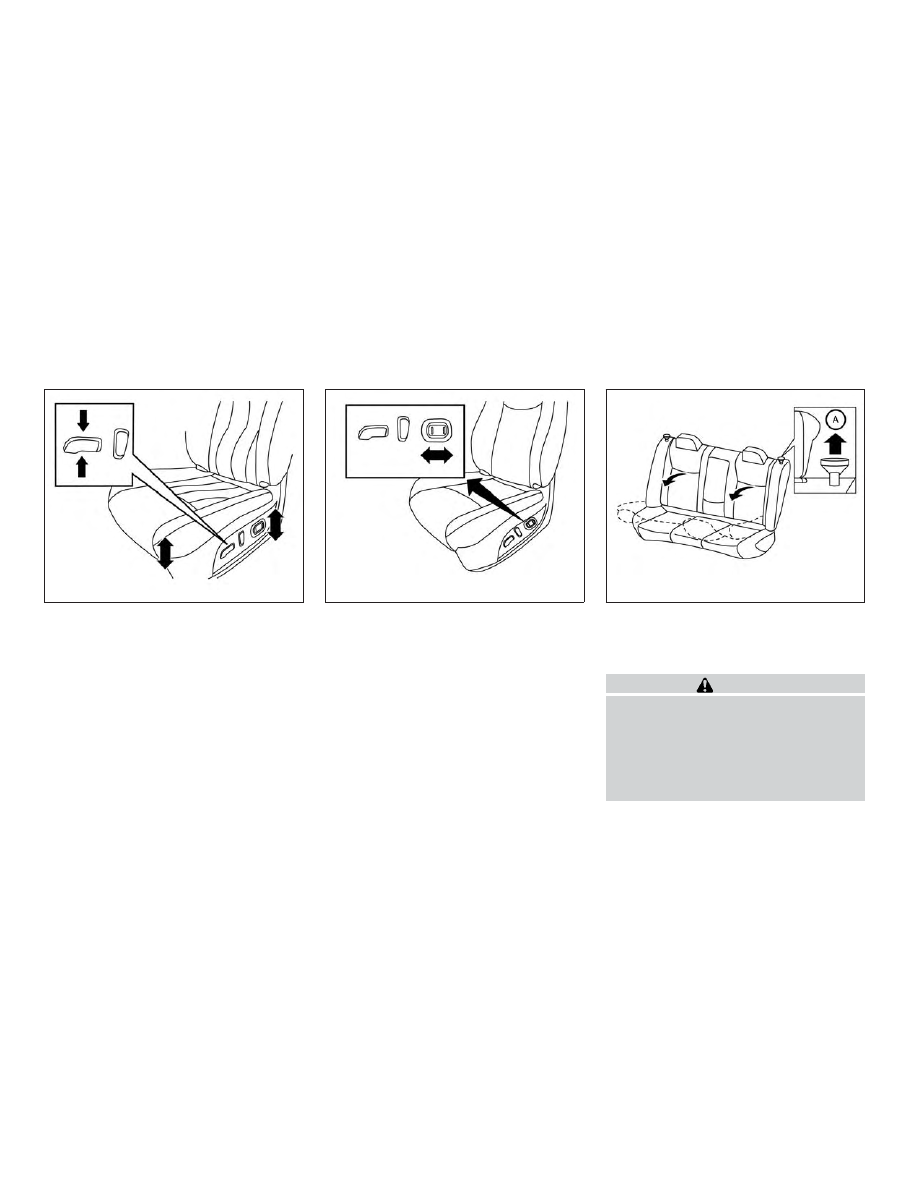Nissan Sentra (2019 year). Instruction - part 2

Seat lifter
Move the switch as shown to adjust the
height of the seat cushion.
Lumbar support
The lumbar support feature provides ad-
justable lower back support to the driver.
Push the switch as shown to adjust the
seatback lumbar area.
FOLDING REAR SEAT
Pull the knob
䊊
A
to fold each seatback
down.
WARNING
∙ Never allow anyone to ride in the
cargo area or on the rear seat when it
is in the fold-down position. Use of
these areas by passengers without
proper restraints could result in seri-
ous injury or death in an accident or
sudden stop.
LRS2784
LRS2745
LRS2194
1-6
Safety—Seats, seat belts and supplemental restraint system